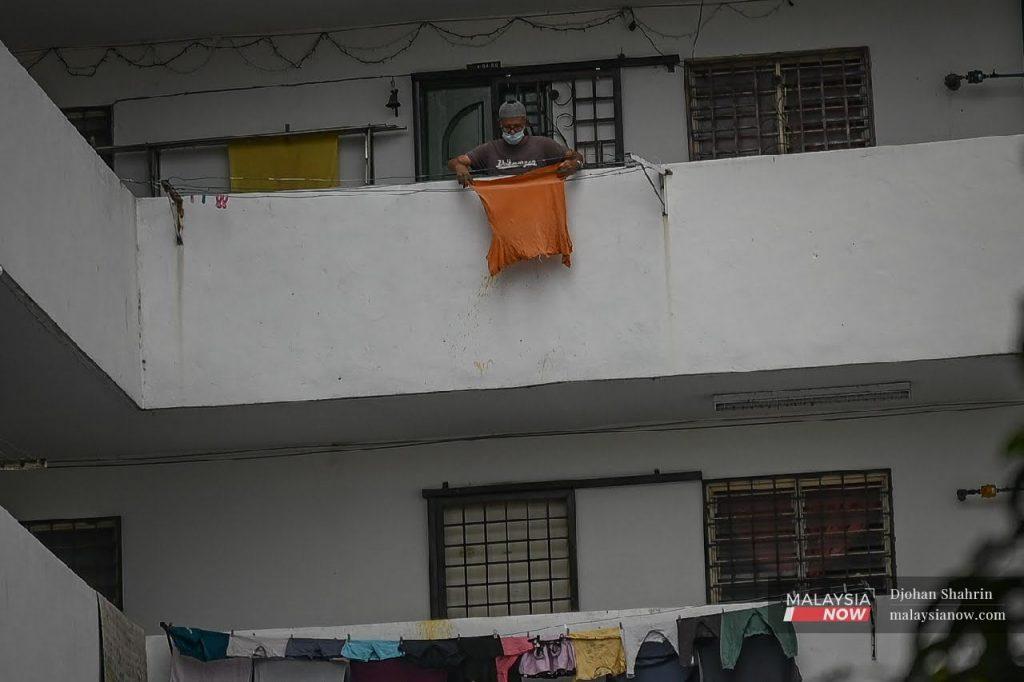Pandemic and lockdowns raise questions over future of housing for the poor
Experts say there should be no disparity in standards between social housing and houses on the private market.
Just In
The Covid-19 pandemic which hit Malaysia early last year has raised questions about the country’s social housing sector, with many low-cost flats or People’s Housing Projects (PPR) turning into hotspots for virus transmission.
Many such housing blocs were placed under enhanced movement control order (EMCO), the strictest form of lockdown, as part of efforts to curb the spread of infection.
The Taman Harmoni PPR in Sandakan, Sabah, was put under EMCO in November last year, while in Kuala Lumpur, EMCO was declared in the Pantai Ria, Seri Semarak and Taman Bukit Angkasa flats in July.
Barbed wire fencing and security personnel monitoring the entrance and exit points have become the hallmark of areas locked down under EMCO, while residents are largely prohibited from leaving their homes.
The PPR concept was established by the government some 20 years ago as part of efforts to eradicate so-called squatter homes through the zero-squatter programme.
But several weaknesses in the programme have become apparent since the arrival of Covid-19.
These include the high density of residents and the cramped living space which is often unable to accommodate entire households.
This is partly due to the design of PPR units which does not take into consideration the differences in household size.
The lack of sufficient facilities is also a problem.
For instance, while individual blocs in a PPR might house hundreds of units, only three lifts are provided.
Once the pandemic hit, it was no surprise that these flats became virus hotspots.
Puteri Marjan Megat Muzaffar, from the Khazanah Research Institute, said the main problem with PPRs is the lack of strict definition on what constitutes quality housing.
“When there is no definition of quality housing, it is hard for us to measure the level of housing in the social sector,” she said at a forum hosted by the institute today.
What is clear however is that the standard of social housing for housing projects under the government’s purview is not the same as the standard of housing in the free market.
This means that PPR residents must endure low housing standards, the threats of a poor environment, and a lack of scheduled maintenance.
And in the pandemic era, houses are no longer just a place of shelter.
With working and studying from home now the order of the day, units measuring 600 sq feet for households of three to six people, the average PPR population, are no longer relevant.
The small size of PPR units also raises the question of mental health.
Such differences in standard make it difficult for PPR residents to weather the pandemic.
Gregory Ho Wai Son, also from the Khazanah Research Institute, said the layout of homes is also important when taking into consideration the matter of quarantine.
“In PPRs, both toilets are located side by side, whereas in homes on the free market, one toilet adjoins the master bedroom.
“This makes it easier for occupants to undergo quarantine, compared to households in PPR flats,” he said.
Ho added that the construction of PPRs should take into account the local culture.
“Is there enough space to eat, and does it give us the appropriate level of freedom?
“It’s not a question of how big it needs to be to prevent the spread of Covid, but of what we need to live well.”
Puteri Marjan meanwhile called for a rethink of the approach to PPRs.
“We should have a variety of gross floor areas in PPRs, for example for big households, for those who are retired, and so on.
“It’s easy to improve the quality of PPRs,” she added. “Ensure that they are of the same standard as private housing.”
Subscribe to our newsletter
To be updated with all the latest news and analyses daily.
